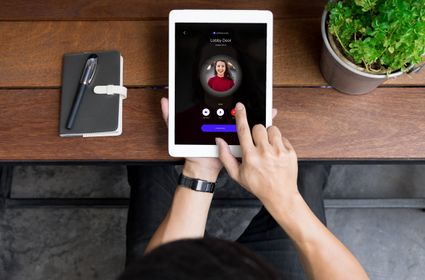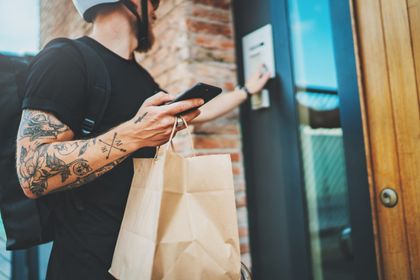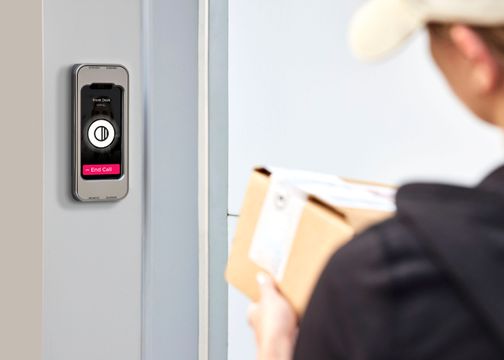Apartments and multifamily buildings are overrun with deliveries every day. Package delivery volumes have skyrocketed, accelerated even more by COVID-19. Everyone is ordering essentials — groceries, toiletries, medications — online. Convenient, one-click checkouts and impulse buying cause buildings to be flooded with single-item boxes. More people are working from home than ever, which means juggling professional and parenting life, so there are more food deliveries coming in and out of apartments as well.
With Swiftlane’s focus on apartments and condos, we have taken our industry knowledge and dug into the problems with delivering in multifamily buildings.
In this article, we’ll discuss the trends and challenges of modern living that are becoming an urgent cause for concern due to delivery.
Table of contents
- Delivery Volumes Are Growing Faster Than Package Lockers Can Store Them
- Unattended Deliveries Are Targets For Package Theft
- Package Theft Is Hard To Trace
- Package Management Is Consuming Operation Costs
- Dedicated Staffing Is Required Just To Handle Incoming Packages
- Tenants Unknowingly Grant Unauthorized Access Through Audio Intercom
- Massive Influx Of Food Deliveries
- Bottleneck Of Food Delivery People Outside Buildings
- Package Lockers Are Not Cheap Or Small
- Package Lockers Are Not A Complete Solution
- Late Pick Up Fees From Package Lockers
- Distributing Keys to Delivery Drivers
- Managing Access Once The Delivery Person Is Inside The Building
- Burden on Property Management
- Tenants Can’t Always Get To Their Packages When They Need Them
Also, read
- Preventing Porch Pirates and Package Theft
- Handling Secure Food Delivery in Apartment Buildings
- 11 Reasons to Upgrade Your Apartment Intercom System
1. Delivery Volumes Are Growing Faster Than Package Lockers Can Store Them
Between USPS, UPS, FedEx, and Amazon, almost 25 billion packages were delivered in 2020. That is about 70 million packages per day.
Package Delivery Volume in 2020
Because of the surge in e-commerce and online ordering, USPS reported a package volume increase of 18.8% compared to 2019. Similarly, UPS reported a 65% increase in package delivery volumes in the summer of 2020 compared to the previous period. While package lockers now seem like the solution to deal with this change, that’s not necessarily the case.
Package Concierge, a package locker manufacturer, explained their formula for figuring out how many package lockers an apartment building may need. Their rule of thumb is 1.75 lockers multiplied by the number of packages per day. They then go on to say that this is just a calculation for an average delivery day and does not account for seasonality. Their resolution for high volume delivery seasons is increasing the number of lockers.
But what happens when the average delivery day suddenly makes an 18.8 or 65% leap? Package volumes have become so unpredictable that it’s impossible for buildings to plan for how many package lockers they will need. And apartment buildings simply don’t have the budget or the space to keep adding lockers when volumes fluctuate. The result is massive package overflow, and a delivery nightmare for residents.
2. Unattended Deliveries Are Targets For Package Theft
With 70 million packages being delivered on average around the US per day, it is becoming impossible for multifamily buildings to manage them securely. Without building staff dedicated to receiving and sorting packages in multifamily buildings, piles of packages are left unattended in unsecured lobbies, or worse, outside the front door.
The high volume of unattended packages has created massive amounts of package theft in multifamily buildings. Well over half of apartment, townhome, and condo residents report incidents of package theft. And it was estimated that $6 billion worth of packages were stolen in 2020 alone.
Package theft in multifamily buildings affects not only the loss of goods for a resident, it also compromises the sense of safety throughout the building. This reflects negatively on the building overall and could become significant enough to affect turnover and acquisition rates.
3. Package Theft Is Hard To Trace
When a package is stolen from an apartment building, it’s very hard to trace back when that event might have occured. Video camera and surveillance systems are outdated and difficult to manage without technical expertise. They do not tie photo and video camera feed back to specific visitor access, so someone would have to constantly monitor those or replay a large history of video footage. And, most intercom systems still use audio-only intercom calling which does not leave any audit trail of the person who was at the building.
More often than not, package theft goes unreported. And, when it is, very rarely is there anything that can be done. Less than 10% of reported package thefts end in an arrest.
4. Package Management Is Consuming Operation Costs
In 2018, the National Multifamily Housing Council (NMHC) found that 68% of building staff spend up to 4 hours a week managing packages. When considering operation costs, the time that staff spend on packages is actually much higher due to the constant interruption of their workflow. A U.C. Irvine study found that it actually takes someone an average of 23 minutes and 15 seconds to return to their original focus after an interruption to their work, such as receiving a package delivery. So, it makes sense that in 2015, Camden Property Trust estimated that across its 59,000 units, 10 minutes of productivity was lost per package received. When paying employees $20 an hour, this equated to a cost of $3.3 million annually for package management alone.
Package volumes are only expected to increase as businesses move their stores online. And, with remote work becoming more normal and in demand, apartment buildings will continue to see increased foot traffic with mid-day food deliveries and courier services delivering confidential, corporate documents. Simply, front desk and building staff are busier than ever and can no longer efficiently handle tenant packages at the rate which satisfies them.
5. Dedicated Staffing Is Required Just To Handle Incoming Packages
Package volumes have become so out of control that multifamily buildings need multiple shifts of dedicated package concierge staff in order to handle them. This could require up to two shifts of two people to cover the many rotating delivery times throughout the day.
6. Tenants Unknowingly Grant Unauthorized Access Through Audio Intercom
Multifamily buildings with audio intercom systems allow tenants to receive a phone call to grant remote access to someone at their door. But, without the ability to visually verify who is at the door, tenants unknowingly buzz people into their building or package room pretending to be delivery couriers. These people then have access to every tenant’s package in the building.
This is a very common problem and very difficult to track. Video cameras are placed in buildings, but the video camera footage cannot be seen by residents. So, it acts only as a responsive measure instead of a preventative one.
7. Massive Influx Of Food Deliveries
Like packages, online food ordering and deliveries has also contributed to the massive increase in foot traffic throughout apartment buildings. In fact, one in three Americans use a food delivery service on a weekly basis.
As more people are working from home than ever before, apartment buildings are seeing a huge increase in food deliveries. These deliveries are either handled by front desk staff or the delivery person needs to call the tenant directly. Front desk staff handling food deliveries need to call the tenant to notify them that their food has arrived and the delivery person is on the way to their door, or the tenant needs to come down to get the order.
This is a very clumsy process for ordering food that requires a lot of leg work, primarily from the tenant.
8. Bottleneck Of Food Delivery People Outside Buildings
During peak food delivery times — dinner, and now lunch with so many people working from home — delivery people are getting bottlenecked at the building entrance. When there is no front desk staff to manage the flow of people in and out of the building, delivery drivers are stuck outside until someone comes to let them in. And, since everyone orders food around the same time, this can leave a crowd of delivery people waiting outside the building. This leaves buildings vulnerable to tailgating as anyone can walk in with the group of deliveries.
9. Package Lockers Are Not Cheap Or Small
While a good solution in theory, package lockers actually come with their own set of issues. They have a very high upfront cost, which makes it an unrealistic option for multifamily buildings without a large budget. Even with the money to spend on a package locker, buildings still need to find a place to put them. The average package or parcel locker is around 7 feet tall and 6 feet wide with about 40 package compartments. Many buildings are not designed to fit something that large in a common area that all tenants can access.
10. Package Lockers Are Not A Complete Solution
Package lockers are just that — a secure unit to store a package. However, multifamily buildings need to consider the following:
- How will the package delivery person gain access to the building to get to the locker?
- How will tenants be notified they have a package?
- What will happen if a tenant hasn’t picked up a package in a certain amount of time?
- What happens if all the lockers are full or a package can’t fit into one of the locker compartments?
With so much to consider, full time staff is needed to receive packages, put them in lockers, notify tenants, and keep track of how long they are in the lockers for.
11. Late Pick Up Fees From Package Lockers
Due to high demand for the limited spaces that lockers have, an apartment building will only give a tenant a few days to a week to pick up their package from a locker. After that, the tenant is automatically charged a fee. This is incredibly inflexible and a huge turnoff for tenants who expect a certain level of security in their building without having to pay a surcharge.
12. Distributing Keys to Delivery Drivers
In an effort to streamline package deliveries, apartment buildings will give delivery drivers a key to the building. But, this has security concerns since delivery drivers rotate and the property manager never really knows who has the key. Which means, they never really know who has access to their property.
Continuing to give out keys to the building also makes key management hard to keep track of. And, it can also become expensive depending how many different couriers there are and how many people will need a key.
13. Managing Access Once The Delivery Person Is Inside The Building
Whether a courier is dropping off a load of packages or a delivery driver is dropping off a pizza, it’s impossible to control where they have access once they are inside the building. This is a huge security concern for multifamily buildings if they do not have front desk or building staff manually monitoring who is coming in, whether they are seen leaving in an appropriate amount of time, and where they are going in the building. Right now in the majority of multifamily buildings, once someone is in, they have free reign to go anywhere.
14. Burden on Property Management
Property managers and property management staff cannot continue to manage the massive flood of packages and deliveries overrunning their buildings. Their concern is with leasing, handling turnover, marketing their property, resolving tenant problems, ensuring a high level of hospitality to retain good tenants — and those are just a few priorities.
Ideally, tenants should be responsible for their food and package deliveries. It has also been reported many times by many studies that they want responsibility for managing their own deliveries — it makes their lives easier and more convenient.
Modern video intercom systems with remote unlock capabilities are ensuring the security of package and food deliveries while giving tenants the control that they want over their visitors and orders. Video intercom allows tenants to see exactly who is at the entrance from their mobile phone and remotely unlock the door from anywhere. In doing so, properties save time, money, and frustration while increasing tenant satisfaction and security.
15. Tenants Can’t Always Get To Their Packages When They Need Them
There are various ways tenants get restricted in accessing the package room in their building when they want. One out of every five tenants are not happy with the way their packages are handled by their property. Many times, this can be attributed to the sheer amount of packages being delivered to apartment buildings every day that restrict tenant’s ability to access their packages when they’d like. Some ways this happens:
Restrictions From Package Room Attendants
Some multifamily buildings receive so many packages for their tenants that they have a package room attendant. A package room attendant oversees the package room, receives, and distributes the packages to residents when they come to pick them up. While this seems like an amenity, it can become anything but as it limits access to the package room for tenants. It also restricts the times that tenants can come to pick up their packages as the package room will have certain operating hours only when the attendant is working.
Restrictions To Self-Service Package Rooms
Some apartment buildings will have unattended package rooms that serve as simply a storage area for the mass amount of package deliveries received every day. The package room will, however, still be locked at night by leasing or other building staff. This is a pain for those tenants who, for example, have a work schedule that does not adhere to normal business hours.
Restrictions From Front Desk Staff
If an apartment building has a front desk staff without a self-service package room, it’s likely that they will be the ones managing deliveries and packages. This limits tenant’s access to packages when they need them in the event that the front desk staff is away tackling other responsibilities that take them away from their desk.
These package management strategies are inconsistent, fragmented, and do not offer a complete solution despite the importance of package management to tenants. In fact, package management has become so important that the 2020 NMHC/Kingsley Apartment Resident Preferences Report found 84% of tenants want secure, self-service, 24/7 package access.




